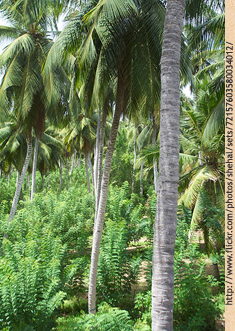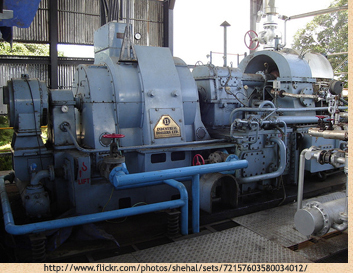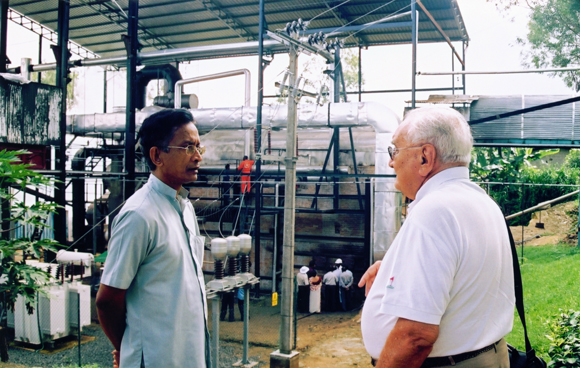Ray Wijewardene: Bio-energy Promoter
-.jpg)
P G Joseph recalls the long years of his advocacy with Ray for Dendro Power in Sri Lanka.
In July 1985, at a seminar organized by the Institution of Engineers Sri Lanka, I presented the first ever proposal in Sri Lanka to generate a large share of our future electrical energy needs by cultivating biomass. Most members of the audience ridiculed this proposal for Dendro power as impracticable and outdated. The only supportive comment came from a foreign-looking man, whom I did not recognise or know at the time. He was Ray Wijewardene.
Ours was an instant meeting of minds. Since then, Ray and I presented to all those who mattered our case of cultivating nitrogen-fixing trees, such as Gliricidia, as Short Rotation Coppice (SRC) to generate electricity. For this advocacy in the national interest, Ray made use of his positions as member of the Board in prestigious institutions such as the Mahaweli Authority, the Institute of Fundamental Studies (IFS), Coconut Development Authority, etc. Most of these institutions did not respond or take it seriously.

At the IFS, where the President of Sri Lanka was ex-officio chair of the Board at time, Ray convinced President Premadasa to issue a directive to Ministry of Power and Energy and the Ceylon Electricity Board (CEB) to prepare a feasibility report for a 500 kW Dendro Power Plant. That never took off after the sudden demise of the President.
But Ray was persistent. Years of our joint advocacy finally led to the European Union agreeing to provide grant funds for a study on the supply of biomass to meet Sri Lanka’s energy needs. This was conducted by the Ministry of Science and Technology from 1999 to 2004. Ray served as a member of the Steering Committee for this project. Under this project 12, SRC plantation plots, each 3 hectares (ha) in extent, were established in 12 locations in Sri Lanka covering all agro-climatic zones. These trials revealed the optimum parameters such as the species, spacing and harvesting intervals. These trials also confirmed the average biomass yield per hectare per year in commercial scale SRC Plantations in various parts of the country.
Ray always practiced what he preached. Around this time, he started planting Gliricidia in his own coconut estate in Kakappalliya as an SRC plantation. He also purchased a 4 kW biomass gasifier based electricity generator and installed it at his estate. This generator was operated from fuelwood grown as intercrop in the estate. Electricity thus generated was used to pump water during day time and to provide electricity to the households within the coconut estate.
Ray and I were able to persuade the Ministry of Science and Technology to purchase and operate a 35 kW electric generator exclusively with chopped Gliricidia wood. This unit was installed at the premises of Lanka Transformers Limited (LTL) and operated as a demonstration unit to convince all “Doubting Thomases” on Dendro power. The Ministry of Science and Technology was also instrumental in commissioning a Gliricidia wood based gasifier to replace Furnace Oil in an industrial establishment.
 Based on the success of the trial plantation plots and the operation of a demonstration unit, Ray convinced the Government of Sri Lanka that Gliricidia should be declared as the fourth Plantation crop in the country. This was announced in 2005. The close association Ray had with LTL resulted in this company together with Ceylon Tobacco Company (CTC) establishing a commercial type 1 MW Dendro Power Plant in Walapane, in the Nuwara Eliya district. This power plant operated successfully for over a year, demonstrating the technical aspects of cultivating, harvesting and converting Gliricidia wood into electricity which could be supplied to the national grid.
Based on the success of the trial plantation plots and the operation of a demonstration unit, Ray convinced the Government of Sri Lanka that Gliricidia should be declared as the fourth Plantation crop in the country. This was announced in 2005. The close association Ray had with LTL resulted in this company together with Ceylon Tobacco Company (CTC) establishing a commercial type 1 MW Dendro Power Plant in Walapane, in the Nuwara Eliya district. This power plant operated successfully for over a year, demonstrating the technical aspects of cultivating, harvesting and converting Gliricidia wood into electricity which could be supplied to the national grid.
Despite the assured and predictable nature of Dendro power, the CEB – which has the monopoly over electricity distribution in Sri Lanka -- did not agree to grant any capacity charge for the power thus provided. LTL and CTC could not operate the power plant on a viable basis as the avoided fuel cost provided by the CEB was inadequate to operate the power plant. But by then, the plant had fulfilled its primary objective of demonstrating commercial scale Dendro power. CEB’s position has not changed up to May 2011.
The success of the Walapane power plant interested many private companies to enter this field. As a first step, the Bio-Energy Association of Sri Lanka was formed with Ray as its first President. Under his leadership, this association convinced the Ministry of Power and Energy, the Energy Conservation Fund (which has now become the Sri Lanka Sustainable Energy Authority) and the CEB to include Dendro power as an option to meet the national electrical energy demand.
Ray lived to see his vision move closer to reality: in 2009, a 10MW biomass power plant was constructed and commissioned in Trincomalee, which is operating satisfactorily without any problems. As I write this, in mid 2011, three Dendro power plants are under construction and 12 more are in advance stages of planning. A further 12 are envisaged.
All this will take us closer to realizing Ray’s dream: Let us Grow Our Own Energy.

Engineer P G Joseph is Director Alternative Energy at Sri Lanka Telecom, and a trustee of Ray Wijewardene Charitable Trust. He collaborated with Ray Wijewardene on dendro power development in Sri Lanka for 25 years.
Further information:
GLIRICIDIA: Local Fuel To Local Power in Sri Lanka, by Ray Wijewardene (September 2005)
Trees: Sri Lanka’s most sustainable source of energy and raw materials, by Ray Wijewardene and P G Joseph (University of Sri Jayawardenapura Forestry and Environment Symposi1995)
Dendro Power introduction at Energy Forum, Sri Lanka
LBO, August 2004: Ceylon Tobacco and Lanka Transformers harvests energy off trees.

